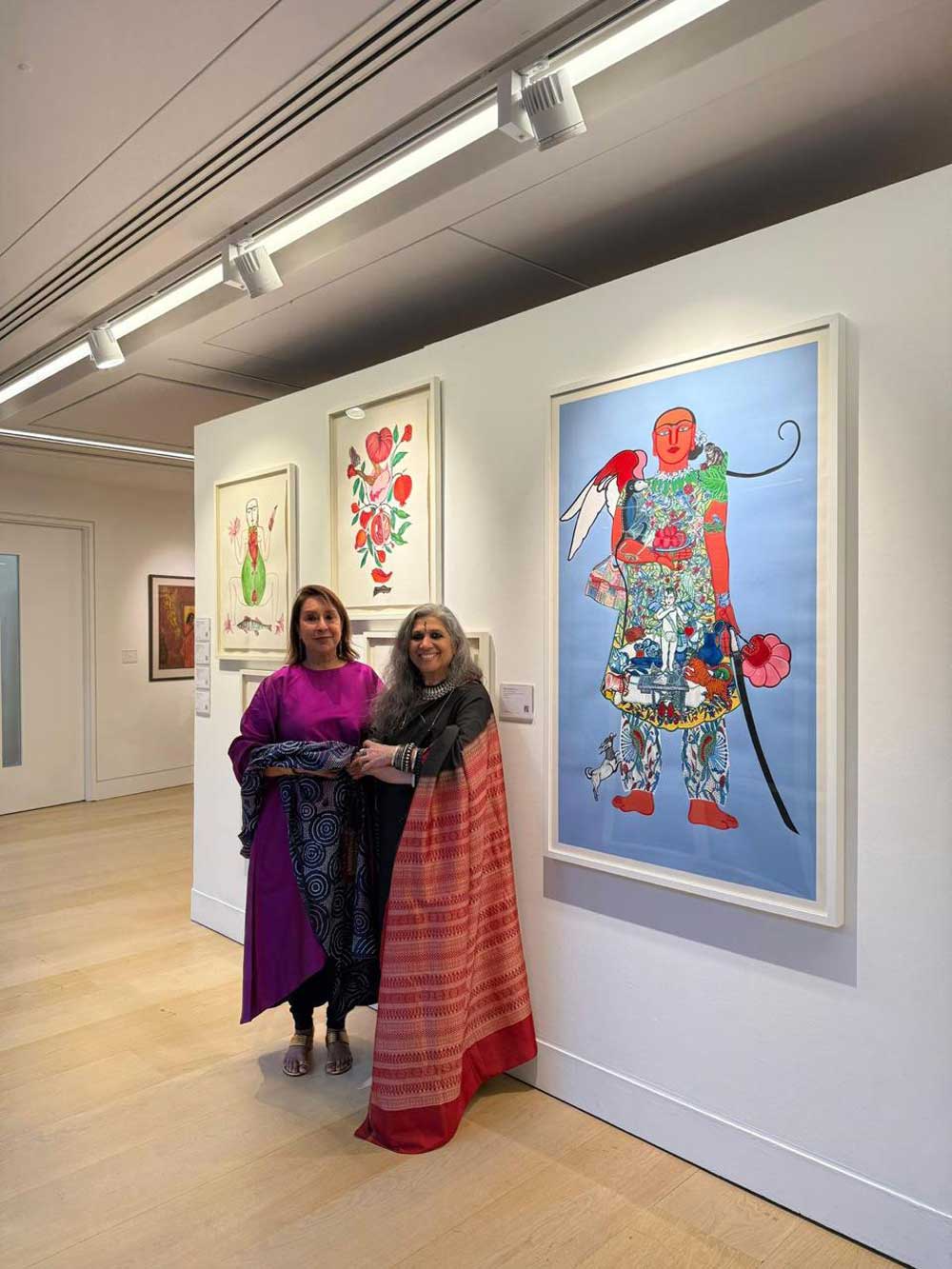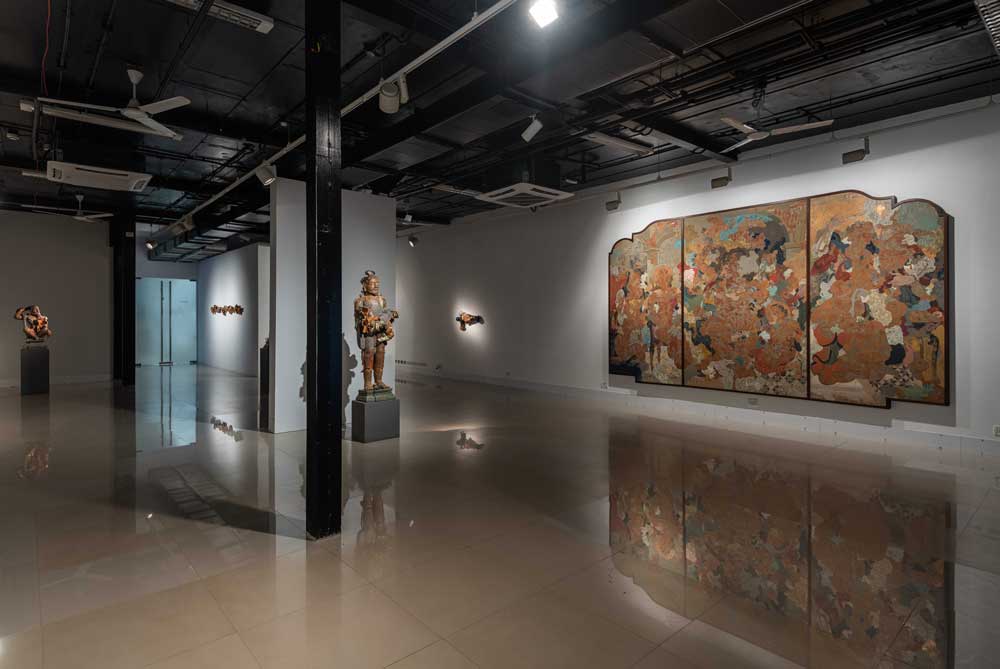For over three decades, Geetha Mehra has been a formidable force in shaping contemporary art in India. As the Founder and Director of Mumbai's iconic Sakshi Gallery, she has consistently championed bold, thought-provoking work and offered a platform to both emerging and established artists from India and beyond. Since its inception in the 1980s, Sakshi Gallery has grown into a globally recognised institution, known for its curatorial rigour, international collaborations, and commitment to pushing the boundaries of visual culture. Nestled in the heart of Mumbai’s Colaba art district, Sakshi Gallery has featured Indian artists like Jehangir Sabavala, Manjit Bawa, Rekha Rodwittiya, Surendran Nair, alongside international names like El Anatsui, Gregory Crewdson, and Julian Opie. Mehra's discerning eye and fearless approach have positioned her at the crossroads of tradition and innovation. In an ever-evolving art landscape, Mehra’s vision is to keep art relevant and appealing.
Why did you decide to get into the arts, not as an artist, but as someone in the trade?
Early on, I realised that I did not have the talent to be an artist, but I was and am deeply interested in the arts, and enjoy the company of creative people. There were a couple of galleries dealing with the more established artists, but none showing the younger ones, those passing out of the Madras Art School in particular. It was a very creative period in the Madras art scene, so I took the plunge with the intent to primarily show artists of my own generation.
You were a pioneer when you set out. What were your early challenges?
Actually, women were at the forefront of the gallery scene, since there were galleries like Sarla’s, Apparao, and Sarah…all run by women! There were no challenges in particular, except for the usual financial hiccups that all startup businesses face. The people of Madras were very supportive, and so were the artists.
Tell us a little about the evolution of Sakshi Gallery, along with some milestone moments.
I believe that we were the first to have a multi-location gallery in India. We simultaneously had four for a period of time – Madras, Bangalore, Bombay, and Pune. That was a record and ahead of its time, I think. Once the internet broke, it was not necessary to have so many branches, and so we consolidated our position in Mumbai. However, we did have an outpost in Taipei for some years until the financial crash in 2008, and one temporary gallery in Berlin for a year or so. In 1996 or thereabouts, the gallery relocated to a defunct textile mill in Worli. That was a big move and unparalleled in India. It changed the way art was being made in the country. Suddenly, there was a huge space with a sixty-foot-high ceiling and a space wide enough to pull a crane through the door! Artists began to get ambitious in their production of art.
Some of our milestone exhibitions are 'Finding India' at the Museum of Modern Art Taipei, Retrospective of Jehangir Sabavala at the National Gallery of Modern Art (NGMA) in Delhi and Mumbai, and 'Laughing in the vernacular', an exhibition at NGMA Bangalore and Mumbai. Sakshi Gallery is soon going to turn 40, and we have major exhibitions planned across India and some overseas as well. More details will follow as they unfold.

How difficult is it for women in India who pursue the arts?
Most galleries, at least in India, are owned and run by women. It’s less competitive than the overseas market. In fact, I’d say it is a level playing field that is also inclusive towards the LGBTQIA+ community.
Have AI and other emerging technologies had an impact on the arts, both good and bad?
Some artists have indeed started using AI, but as yet nothing brilliant seems to have emerged from it. But these are early days. What I do know is that it’s going to push the prices up of conventionally-produced studio practice.
In India, we also have a strong indigenous arts tradition and system. While contemporary art, sculpture, and artists are always recognised in their individual capacities, how can we ensure that there are ways to celebrate the talent of these indigenous craftsmen?
This is happening and happening very rapidly. Indigenous artists are recognised not only by their signature but by their style and are being assimilated into mainstream galleries.
What does the future hold for art in India? Are there any artists to watch out for?
There are lots of young galleries opening up across the country. Art school numbers are swelling, and on account of social media, talent is being recognised from all corners of the country. People are less intimidated by art and art galleries, and understanding that one does not need deep pockets to buy art. In fact, ₹25 is enough for starters!
